Abstract
During studies of the ability of antilymphocyte serum (ALS) to suppress the immune mechanism of mice and thereby allow HeLa cells to grow into a large tumour in the mice, it was observed that many tumours continued to grow even after the ALS treatment had been stopped and full immunological competence of the mice had returned. The HeLa cells of such tumours appeared to be unchanged in their ability to induce further tumours in ALS treated mice to which they were transferred and, furthermore, the mice which were carrying such tumours in the presence of immunological competence were able to reject additional injections of HeLa cells or other human tumour cells. The four possible explanations for this phenomenon, (i) depression of cellular response; (ii) local reaction at the graft site; (iii) the presence of a blocking factor; and (iv) the elevation of the humoral response, have been investigated.
Full text
PDF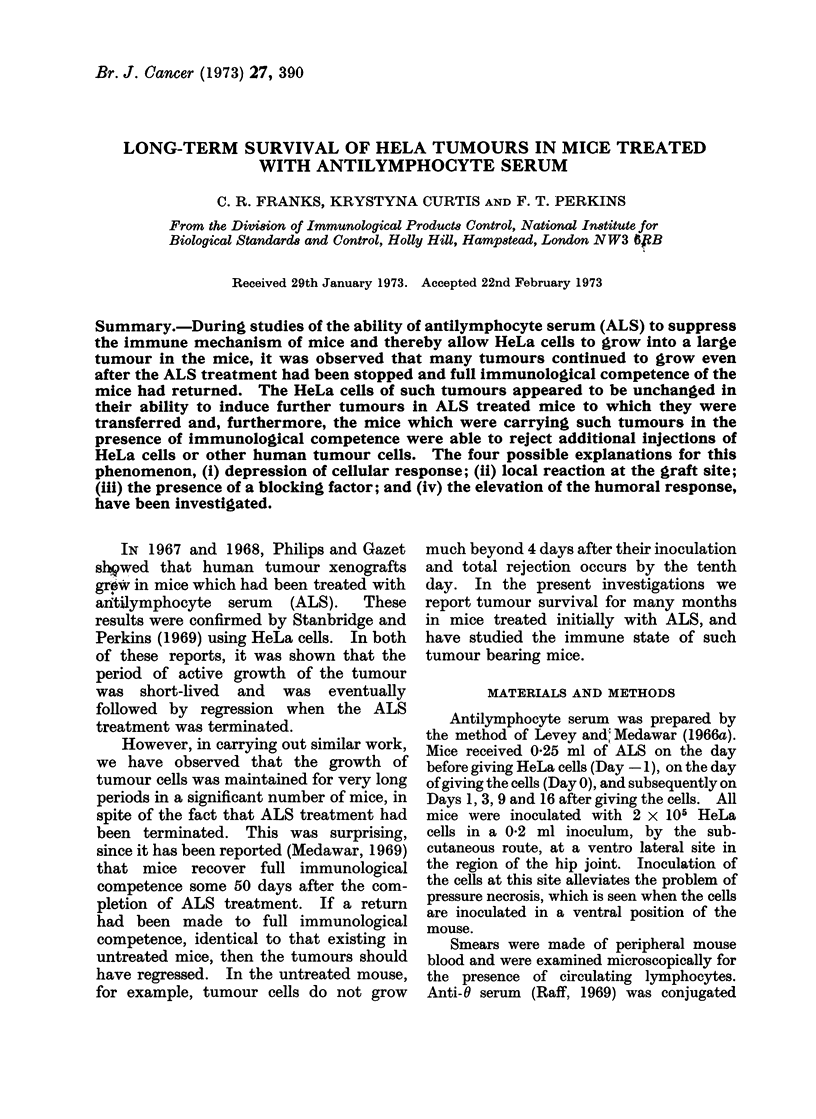
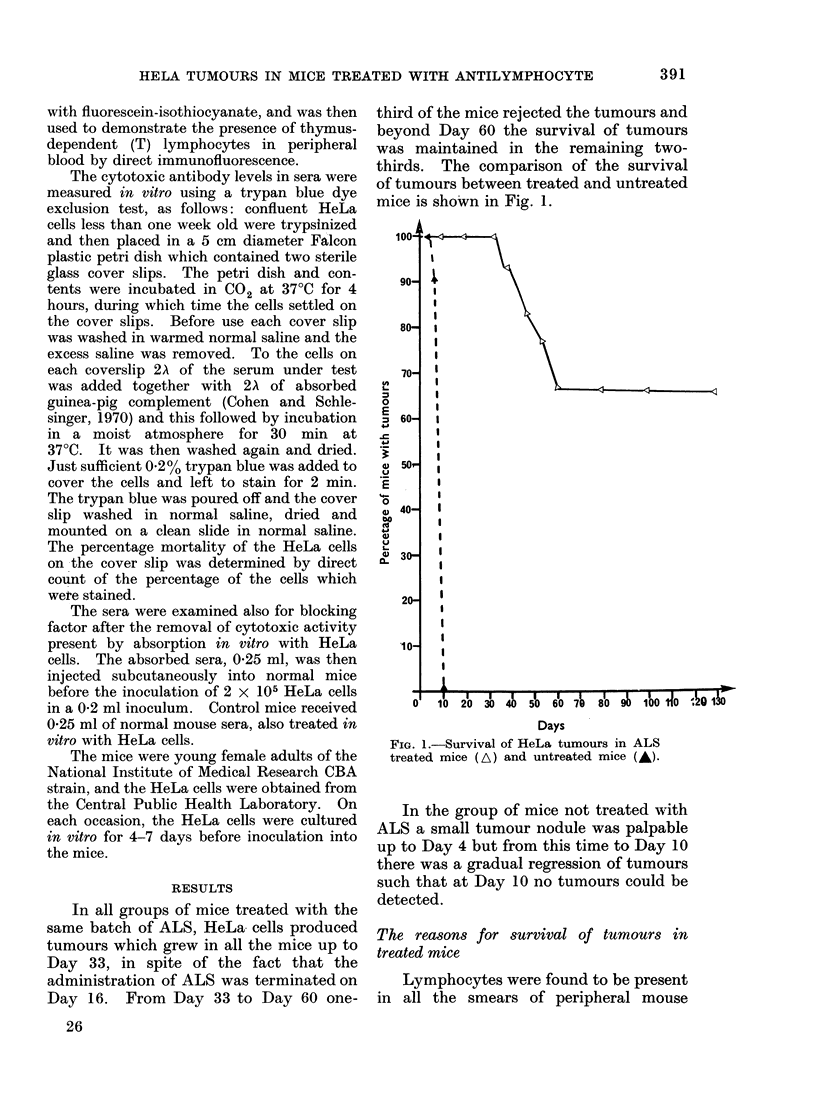
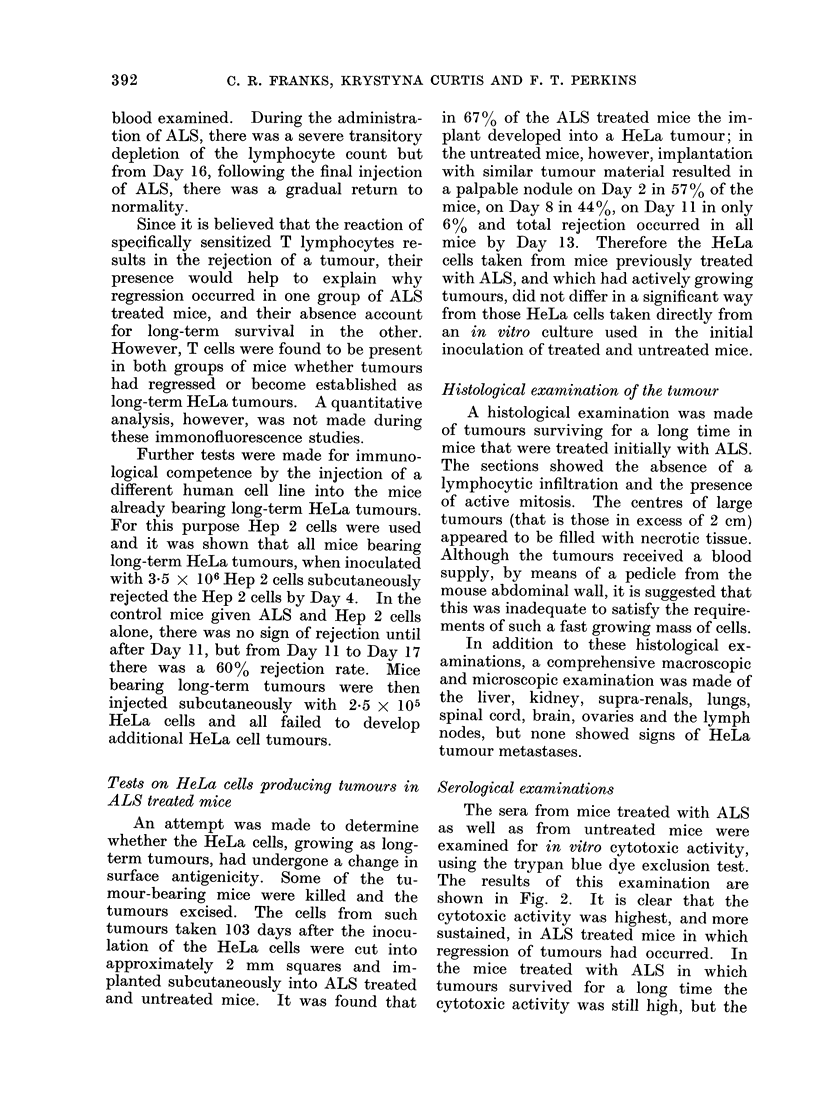
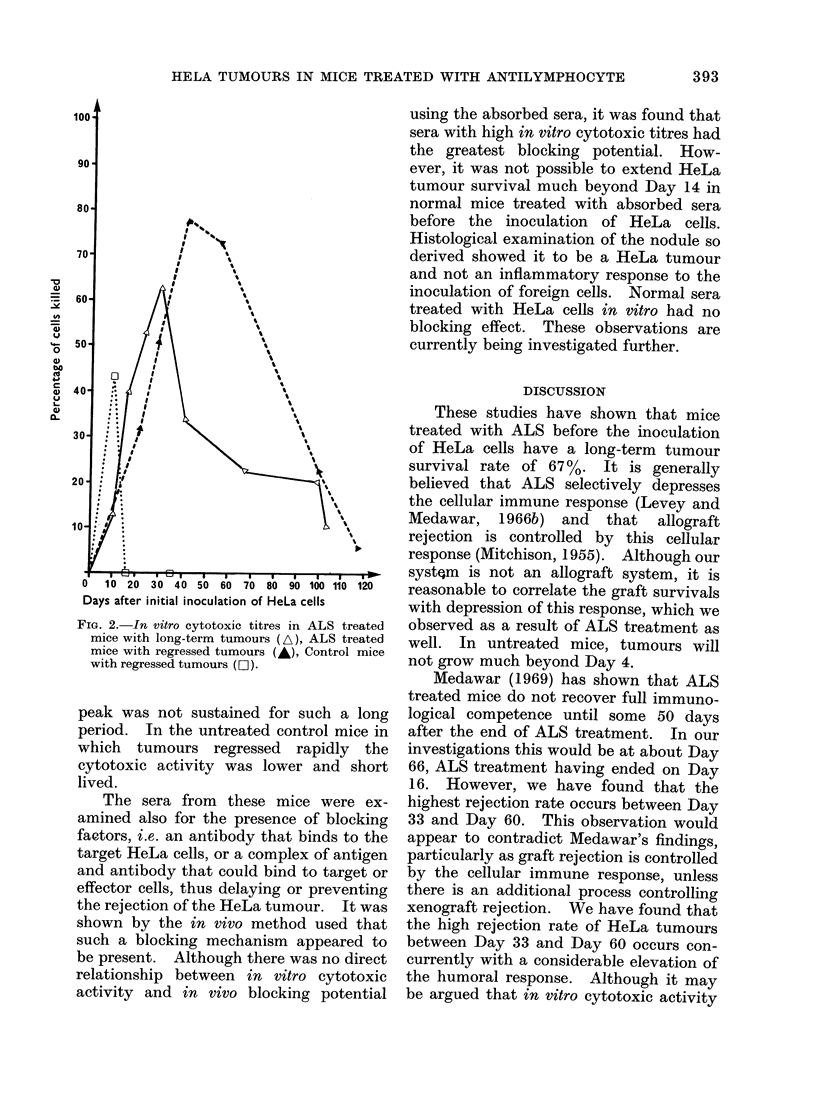
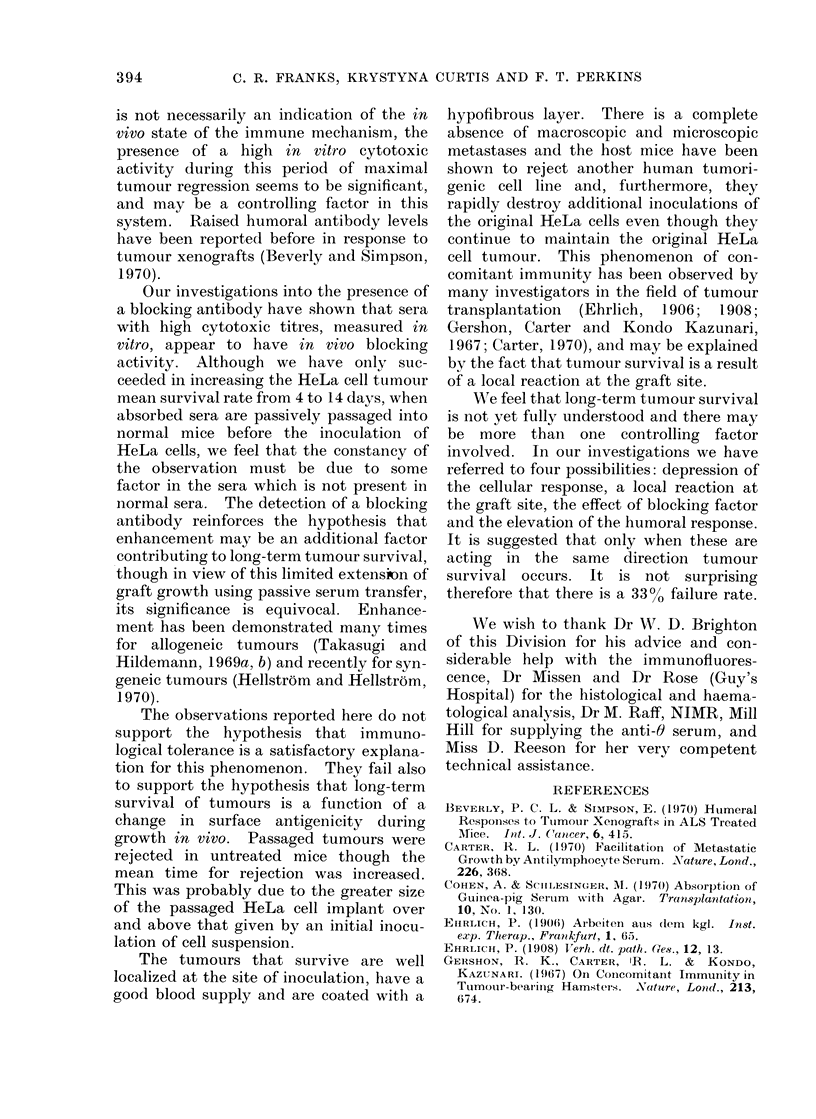
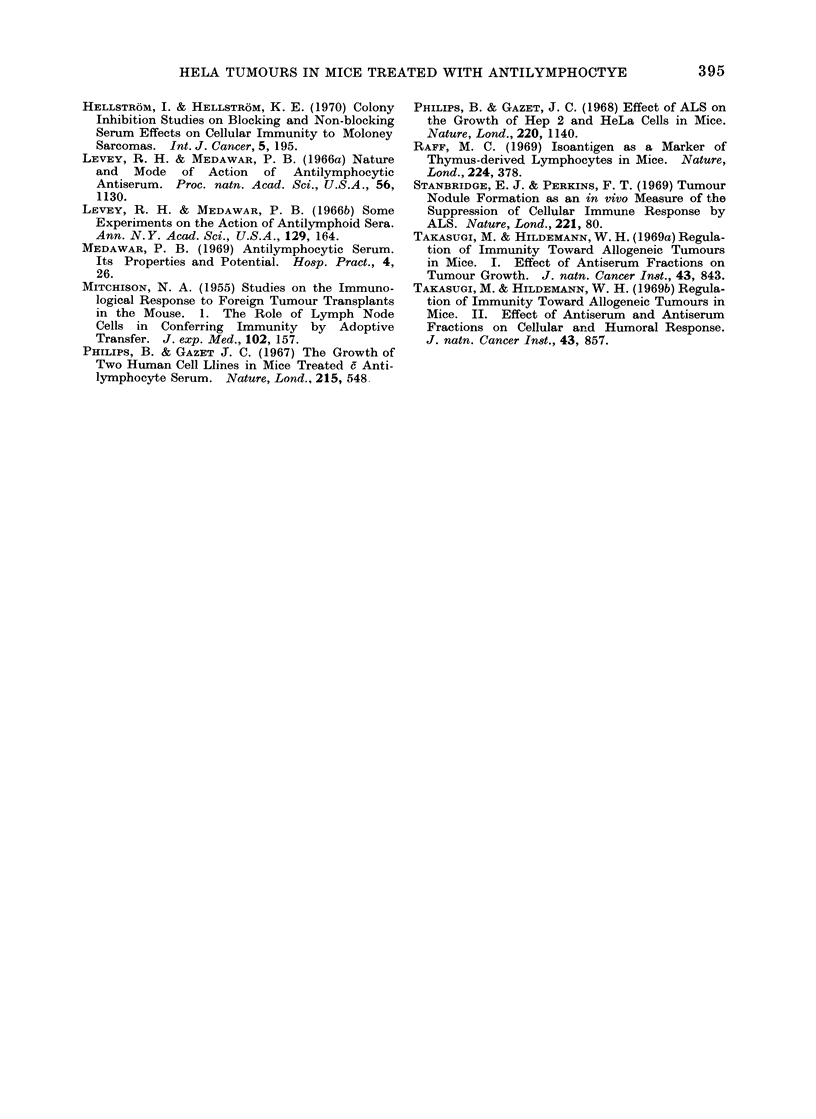
Selected References
These references are in PubMed. This may not be the complete list of references from this article.
- Cohen A., Schlesinger M. Absorption of guinea pig serum with agar. A method for elimination of itscytotoxicity for murine thymus cells. Transplantation. 1970 Jul;10(1):130–132. doi: 10.1097/00007890-197007000-00027. [DOI] [PubMed] [Google Scholar]
- Gershon R. K., Carter R. L. Facilitation of metastatic growth by antilymphocyte serum. Nature. 1970 Apr 25;226(5243):368–370. doi: 10.1038/226368a0. [DOI] [PubMed] [Google Scholar]
- Gershon R. K., Carter R. L., Kondo K. On concomitant immunity in tumour-bearing hamsters. Nature. 1967 Feb 18;213(5077):674–676. doi: 10.1038/213674a0. [DOI] [PubMed] [Google Scholar]
- Hellström I., Hellström K. E. Colony inhibition studies on blocking and non-blocking serum effects on cellular immunity to Moloney sarcomas. Int J Cancer. 1970 Mar 15;5(2):195–201. doi: 10.1002/ijc.2910050205. [DOI] [PubMed] [Google Scholar]
- Levey R. H., Medawar P. B. Nature and mode of action of antilymphocytic antiserum. Proc Natl Acad Sci U S A. 1966 Oct;56(4):1130–1137. doi: 10.1073/pnas.56.4.1130. [DOI] [PMC free article] [PubMed] [Google Scholar]
- MITCHISON N. A. Studies on the immunological response to foreign tumor transplants in the mouse. I. The role of lymph node cells in conferring immunity by adoptive transfer. J Exp Med. 1955 Aug 1;102(2):157–177. doi: 10.1084/jem.102.2.157. [DOI] [PMC free article] [PubMed] [Google Scholar]
- Phillips B., Gazet J. C. Effect of antilymphocyte serum on the growth of Hep 2 and HeLa cells in mice. Nature. 1968 Dec 14;220(5172):1140–1141. doi: 10.1038/2201140a0. [DOI] [PubMed] [Google Scholar]
- Phillips B., Gazet J. C. Growth of 2 human tumour cell lines in mice treated with antilymphocyte serum. Nature. 1967 Jul 29;215(5100):548–549. doi: 10.1038/215548a0. [DOI] [PubMed] [Google Scholar]
- Raff M. Theta isoantigen as a marker of thymus-derived lymphocytes in mice. Nature. 1969 Oct 25;224(5217):378–379. doi: 10.1038/224378a0. [DOI] [PubMed] [Google Scholar]
- Stanbridge E. J., Perkins F. T. Tumour nodule formation as an in vivo measure of the suppression of cellular immune response by antilymphocytic serum. Nature. 1969 Jan 4;221(5175):80–81. doi: 10.1038/221080a0. [DOI] [PubMed] [Google Scholar]
- Takasugi M., Hildemann W. H. Regulation of immunity toward allogeneic tumors in mice. II. Effect of antiserum and antiserum fractions on cellular and humoral response. J Natl Cancer Inst. 1969 Oct;43(4):857–867. [PubMed] [Google Scholar]


